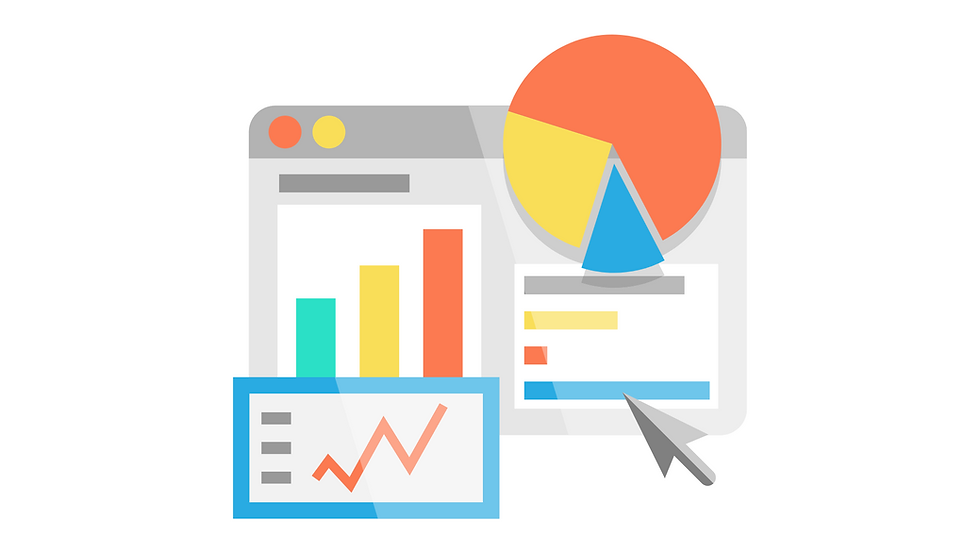Future-Proof your Google Ads strategy: What to do to be compliant with Google's upcoming cookie update.
- webwordsint
- Feb 16, 2024
- 3 min read

As Google prepares to phase out third-party cookies in Chrome, a significant change is on the horizon for digital marketing and online advertising strategies. Here's a step-by-step guide designed to future-proof your Google Ads campaigns in light of these upcoming changes. This guide is crafted to futur-proofing your google ads strategy for those who may not be deeply familiar with the technical aspects of digital marketing but understand its importance for business success.
Step 1: Emphasize First-Party Data Collection
Understand First-Party Data: This is data collected directly from your customers or site visitors through your website, social media profiles, CRM, and other direct interactions. It includes information like email addresses, customer behavior on your site, purchase history, and more.
Action Items:
Enhance your website and social media channels to encourage users to share their information. This can be through sign-ups, subscriptions, account creations, and feedback forms.
Ensure you have a solid CRM (Customer Relationship Management) tool in place to store and manage this data effectively.
Step 2: Optimize Your Website for User Engagement
Create Valuable Content: Offering valuable, informative, and engaging content encourages visitors to spend more time on your site and interact more deeply with your brand.
Improve User Experience (UX): Ensure your website is user-friendly, fast-loading, and mobile-optimized to reduce bounce rates and enhance engagement.
Step 3: Explore Google's Privacy Sandbox
Stay Informed: The Privacy Sandbox is Google’s initiative to create web technologies that both protect people’s privacy online and give companies and developers tools to build thriving digital businesses.
Experiment with New Tools: Familiarize yourself with the tools being proposed in the Privacy Sandbox, such as FLoC (or its replacements) and FLEDGE for ad targeting and delivery without third-party cookies.
Step 4: Utilize Google Ads’ First-Party Data Tools
Customer Match: Leverage Customer Match to use your first-party data to reach and re-engage customers across Google's products. Ensure your lists are up-to-date and segment your audiences to target them more effectively.
Conversion Tracking: Make sure you're using Google Ads conversion tracking to understand how effectively your ads lead to valuable customer activity.
Step 5: Diversify Your Advertising Channels
Explore Beyond Google: Don’t rely solely on Google Ads. Explore other platforms like Facebook, Instagram, LinkedIn, and even emerging platforms where your audience may be active.
Content Marketing and SEO: Invest in content marketing and search engine optimization (SEO) to build organic traffic, which isn’t affected by changes in advertising technologies.
Step 6: Prepare for a Cookie-less Future
Contextual Advertising: Focus on contextual targeting, which involves placing ads based on the content of the web page, rather than on user behavior.
Predictive Analytics: Invest in predictive analytics to use your first-party data more effectively. This can help anticipate customer needs and behaviors without relying on third-party cookies.
Step 7: Stay Informed and Flexible
Follow Industry Updates: The digital marketing landscape is rapidly evolving, especially with the impending changes to cookies. Stay up-to-date with the latest news from Google and other technology leaders.
Be Ready to Adapt: Be prepared to adjust your strategies based on new developments and the effectiveness of your campaigns.
Step 8: Focus on Privacy and Transparency
Build Trust: Use this transition as an opportunity to build trust with your audience by being transparent about how you collect and use data.
Privacy Policy: Ensure your privacy policy is up-to-date and clearly communicates how you handle user data.
By taking these steps, you can not only prepare for the upcoming changes to Google’s cookie policy but also build a more resilient and diversified digital marketing strategy that is less reliant on any single technology or platform. This approach not only future-proofs your advertising efforts but also builds a stronger, more direct relationship with your customers.




Comments